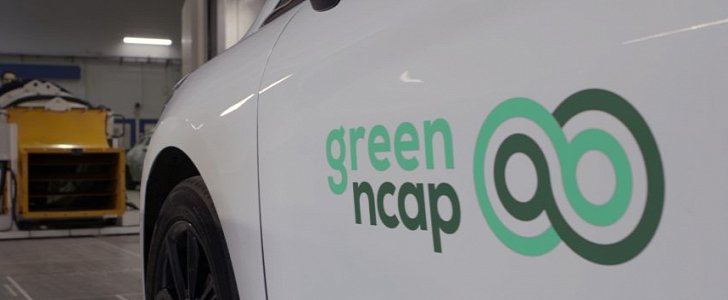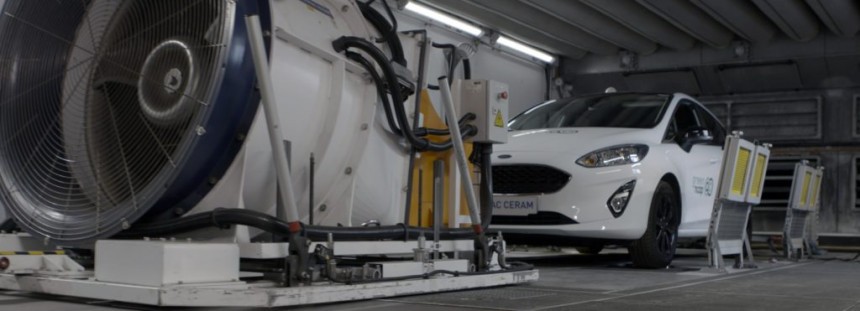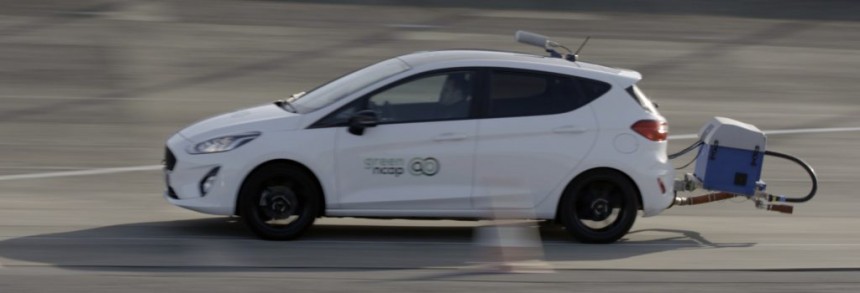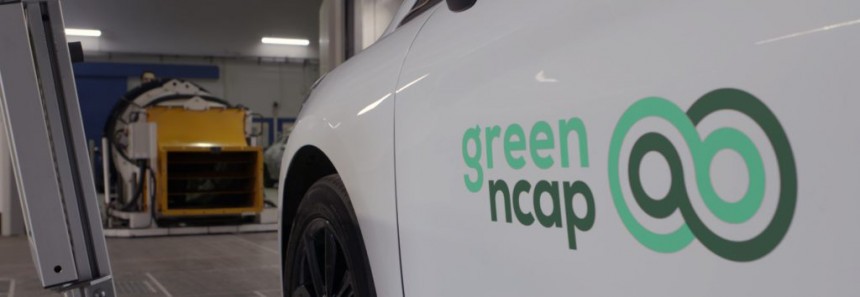Electric or electrified vehicles are now at the center of the most comprehensive action plans the auto industry has seen in ages. There is currently no single carmaker worth mentioning that doesn’t plan to turn massively electric by the middle of the next decade. But what does electrification mean for the average consumer? Will electric mean indeed less damage to the environment? And, ultimately, how does one choose one such car over another?
Ever since electrification started being taken seriously by the industry, there were those who claimed pure electric vehicles are much harmful for the environment in the long run than a well-built internal combustion machine.
There are currently two ways of measuring car emissions. The most used of all, tank-to-wheel, refers to the emissions a car emits while in motion. The most accurate and comprehensive measurement, well-to-wheel, determines the amount of emissions by taking into account every single stage in a car’s life, from fuel extraction to manufacturing, shipping, operation and ultimately destruction.
There is currently no standardized way to measure the well-to-wheel emission levels, and there’s also no worthwhile method of comparing the efficiency of electrified vehicles compared to one another. But the Euro NCAP plans to change that.
In early March 2019, the organization announced the introduction of the Green NCAP procedure meant to “provide the most comprehensive independent information to consumers about as many vehicles as possible.”
That means knowing how much pollution a car generates from production, into operation and even when being destroyed or recycled.
The most important thing about this series of tests is that they will be conducted for all types of cars, regardless of powertrain. This will help customers make an informed choice, but it has the potential to forever end the debate surrounding the advantages or disadvantages of electric cars.
For starters however, tests will only take into account tank-to-wheel emissions and will be conducted only for passenger cars. That’s because the gargantuan task of developing testing protocols for well-to-wheel emissions has only just begun.
The laboratory procedure is based on the World Harmonised Light-Vehicles Test Cycle (WLTC) of 2017, “but with more realistic boundary conditions.” In all, five lab tests are conducted, related to the car’s driving settings: WLTC cold, WLTC warm with standard-mode, WLTC warm with eco-mode, WLTC warm with sports-mode and BAB130 motorway-cycle.
Road tests are used to collect tailpipe emissions as well, but this time based on the Real Driving Emissions (RDE) procedure, using Portable Emission Measuring Systems (PEMS).
In this test, the cars are operated in urban, rural and motorway driving to measure NOx, CO, and particulates. In the future, Green NCAp also plans to measure hydrocarbons.
The pollutants Green NCAP is looking for are carbon monoxide (CO), nitric oxide (NO), nitrogen dioxide (NO2) and the number of particulates (PN).
All the figures resulted from the above tests will in the future be correlated with a series of indicators called driving resistance. These indicators take into account mass, aerodynamic drag and rolling resistance on the road to determine the energy demand of the vehicles.
All the measurements made are condensed in three main indexes: Clean Air Index (the performance of a vehicle in mitigating pollutant emissions), Energy Efficiency Index (the efficiency with which energy is converted to propel the vehicle) and Greenhouse Gasses – carbon dioxide (CO2), methane (CH4) and Nitrous oxide (N2O)
For purposes of emissions ratings, the ratings are as follows: one star - pollutant control and/or energy efficiency is compromised, two stars - lacking some emission abatement and/or fuel-saving technology with room for improvement, three stars - equipped with regular emission abatement and fuel-saving technology fitted, not outperforming competitors, four stars - robust emission abatement and fuel-saving technology, and finally five stars - low pollutants and greenhouse gasses.
Mind you, all of the above ratings are for now awarded only for the time a car is in operation, but they will soon apply for the entire life cycle of a vehicle, something that has never been tried before.
These models were selected, as will future ones, because they are some of the best-selling cars in their segments. The batch also represents “common engine types and a mix of internal combustion and electric vehicles.”
As expected, the Hyundai Ioniq and BMW i3 have rated at the top of the chart, with five stars, while at the opposite end, with a zero star rating, were the Volkswagen Golf 1.6TDI, Fiat Panda 1.0 and the previous version Ford Fiesta 1.0 EcoBoost.
More details about the testing procedure and the rating for the cars can be found at the following link.
There are currently two ways of measuring car emissions. The most used of all, tank-to-wheel, refers to the emissions a car emits while in motion. The most accurate and comprehensive measurement, well-to-wheel, determines the amount of emissions by taking into account every single stage in a car’s life, from fuel extraction to manufacturing, shipping, operation and ultimately destruction.
There is currently no standardized way to measure the well-to-wheel emission levels, and there’s also no worthwhile method of comparing the efficiency of electrified vehicles compared to one another. But the Euro NCAP plans to change that.
In early March 2019, the organization announced the introduction of the Green NCAP procedure meant to “provide the most comprehensive independent information to consumers about as many vehicles as possible.”
Why Green NCAP
The ultimate goal of Green NCAP is to turn into a huge database containing information about the well-to-wheel emissions of the most popular vehicles, across powertrain types that range from internal combustion to fully electric.That means knowing how much pollution a car generates from production, into operation and even when being destroyed or recycled.
For starters however, tests will only take into account tank-to-wheel emissions and will be conducted only for passenger cars. That’s because the gargantuan task of developing testing protocols for well-to-wheel emissions has only just begun.
Testing Procedure
The evaluations conducted by Green NCAP include laboratory and road tests. In laboratory tests, the car sits on a chassis dynamometer and is driven through a prescribed cycle while the exhaust fumes are being collected. These fumes are then analyzed to produce whatever result.The laboratory procedure is based on the World Harmonised Light-Vehicles Test Cycle (WLTC) of 2017, “but with more realistic boundary conditions.” In all, five lab tests are conducted, related to the car’s driving settings: WLTC cold, WLTC warm with standard-mode, WLTC warm with eco-mode, WLTC warm with sports-mode and BAB130 motorway-cycle.
Road tests are used to collect tailpipe emissions as well, but this time based on the Real Driving Emissions (RDE) procedure, using Portable Emission Measuring Systems (PEMS).
In this test, the cars are operated in urban, rural and motorway driving to measure NOx, CO, and particulates. In the future, Green NCAp also plans to measure hydrocarbons.
All the figures resulted from the above tests will in the future be correlated with a series of indicators called driving resistance. These indicators take into account mass, aerodynamic drag and rolling resistance on the road to determine the energy demand of the vehicles.
All the measurements made are condensed in three main indexes: Clean Air Index (the performance of a vehicle in mitigating pollutant emissions), Energy Efficiency Index (the efficiency with which energy is converted to propel the vehicle) and Greenhouse Gasses – carbon dioxide (CO2), methane (CH4) and Nitrous oxide (N2O)
Rating
Just as it does with the crash tests it conducts, the organization will rate a car’s emissions by using stars, “the highest and simplest level at which cars can be compared.” Simply put, the more stars a car has – up to five – the better it performed under tests.For purposes of emissions ratings, the ratings are as follows: one star - pollutant control and/or energy efficiency is compromised, two stars - lacking some emission abatement and/or fuel-saving technology with room for improvement, three stars - equipped with regular emission abatement and fuel-saving technology fitted, not outperforming competitors, four stars - robust emission abatement and fuel-saving technology, and finally five stars - low pollutants and greenhouse gasses.
Mind you, all of the above ratings are for now awarded only for the time a car is in operation, but they will soon apply for the entire life cycle of a vehicle, something that has never been tried before.
First Green NCAP Results
In March 2019, Green NCAP released the first results of its testing procedures for 12 cars: BMW i3, Hyundai Ioniq, BMW X1, Mercedes-Benz A-Class, Ford Fiesta Euro 6d-Temp, Audi A7 Sportback, Subaru Outback, Volvo XC40, Fiat Panda, Ford Fiesta Euro 6B, and Volkswagen Golf.These models were selected, as will future ones, because they are some of the best-selling cars in their segments. The batch also represents “common engine types and a mix of internal combustion and electric vehicles.”
As expected, the Hyundai Ioniq and BMW i3 have rated at the top of the chart, with five stars, while at the opposite end, with a zero star rating, were the Volkswagen Golf 1.6TDI, Fiat Panda 1.0 and the previous version Ford Fiesta 1.0 EcoBoost.
More details about the testing procedure and the rating for the cars can be found at the following link.




